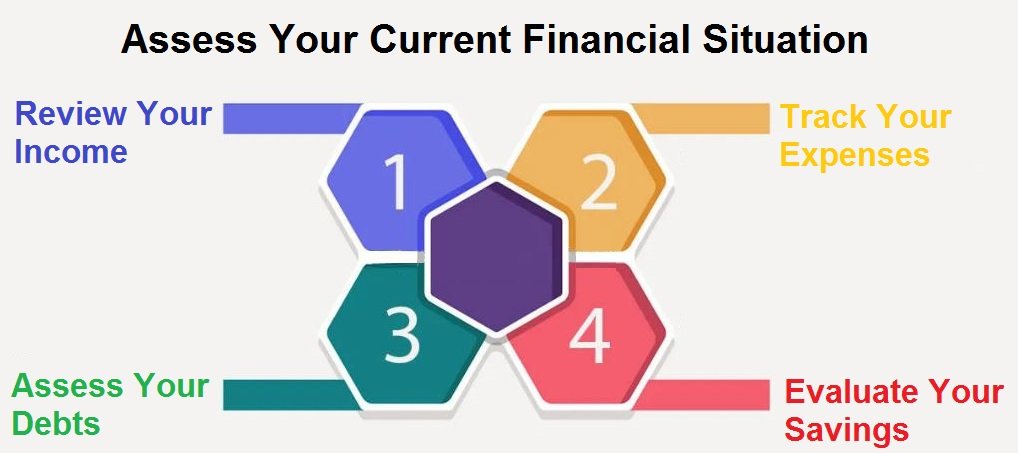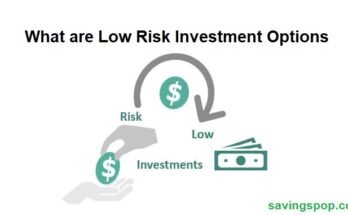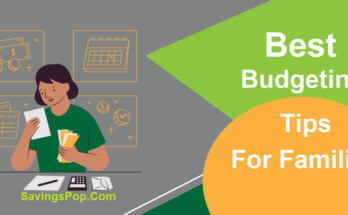Welcoming a new baby into your family is a thrilling and joyous occasion, but it additionally comes with large financial duties. Preparing for the advent of your toddler consists of more than simply installing vicinity a nursery and searching for cute clothes. It requires cautious financial plans to make sure you can meet your infant’s wishes without compromising your circle of relatives’s economic balance. In this article, we’re going to manual you via the essential steps of budgeting for a new baby, from assessing your current financial situation to lengthy-time period financial making plans.
Budgeting for a New Baby is Crucial
The arrival of a child brings great pleasure, however, it additionally introduces new fees which can affect your household price range drastically. From medical bills to diapers, child meals, apparel, and childcare, the prices can upload up speedy. Budgeting for a brand new baby is important because it enables you to put together those fees, keep away from useless debt, and ensure your circle of relatives’s economic well-being. By planning, you can focus on enjoying it slowly with your newborn without the added pressure of monetary uncertainty.
Step 1: Assess Your Current Financial Situation
Before you begin making plans for your toddler’s charges, it is important to have a clear know-how of your current economic situation. This involves evaluating your income, charges, debts, and financial savings. Here’s how you may do it:

- Review Your Income: Calculate your overall month-to-month earnings from all sources, along with salaries, bonuses, and other assets of income.
- Track Your Expenses: List all of your month-to-month charges, together with rent or loan, utilities, groceries, transportation, insurance, and leisure. Use bank statements and receipts to make certain you capture all charges.
- Assess Your Debts: List any great money owed, such as credit score card balances, pupil loans, and automobile loans. Note the interest prices and month-to-month bills for every debt.
- Evaluate Your Savings: Take inventory of your present-day savings, which includes the emergency budget, retirement money owed, and other investments.
By thoroughly assessing your economic scenario, you can perceive regions in which you may cut again on spending and allocate more budget toward baby-related expenses.
Step 2: Estimate Baby-Related Expenses
Next, you need to estimate the costs related to having a toddler. Baby fees can vary widely depending on your lifestyle, area, and private possibilities, however, right here are a few common classes to take into account:
- Prenatal Care and Delivery: Medical prices during pregnancy, such as prenatal visits, ultrasounds, and transport expenses, can be widespread. Check with your medical health insurance provider to apprehend what is covered and what you’ll want to pay out-of-pocket.
- Nursery Setup: This includes the value of a crib, bed, converting table, cloth cabinet, and different furnishings. Don’t neglect to finances for decorations and bedding.
- Baby Gear: Strollers, automobile seats, baby carriers, and excessive chairs are important items. Consider looking for offers or 2nd-hand alternatives to shopping for money.
- Clothing and Diapers: Babies outgrow clothes quickly, so budget for multiple sizes. Diapers and wipes are also an ordinary expense.
- Feeding Supplies: If you intend to bottle-feed, price range for bottles, components, and sterilizers. Breastfeeding mothers may need a breast pump and nursing accessories.
- Healthcare: Beyond prenatal care and delivery, budget for pediatrician visits, vaccinations, and any surprising clinical charges.
- Childcare: If each mother and father plan to work, remember the value of daycare or a nanny. Childcare can be one of the largest fees, so it is essential to research and plan.
By estimating those charges, you could create a realistic finance that debts for all important child-related expenses.
Also Read: 9 Simple and Best Money Saving Ideas that Work
Step 3: Create a New Budget Plan
With a clear know-how of your financial situation and estimated toddler charges, it is time to create a brand new price range plan. This plan will help you allocate the price range efficaciously and ensure you cover all vital charges. Here’s the way to get began:
- List Your Income and Expenses: Create an in-depth listing of your monthly profits, fees, and brand-new child-related fees.
- Prioritize Essential Expenses: Make certain you prioritize critical costs including housing, utilities, groceries, and healthcare. Allocate funds for toddler necessities like diapers, formula, and garb.
- Cut Unnecessary Spending: Identify areas where you may lessen or put off spending. This may encompass eating out less, canceling subscriptions, or finding extra cheap leisure options.
- Set Spending Limits: Establish spending limits for discretionary classes which include enjoyment, eating out, and personal care. Stick to those limits to avoid overspending.
- Use Budgeting Tools: Consider using budgeting apps or gear to song your income and fees. These tools can help you live organized and monitor your spending behavior.
By growing a detailed price range plan, you can ensure that you have enough finances to cover your child’s desires without compromising your monetary stability.
Step 4: Prioritize Necessary Expenses Over Luxuries
When budgeting for a new infant, it’s crucial to distinguish between vital fees and luxuries. While it is tempting to splurge on today’s infant gadgets and designer clothes, those that specialize in requirements will assist you in manipulating your finances better. Here are some pointers:
- Focus on Essentials: Prioritize items that your infant desires, along with a safe crib, car seat, and primary clothing.
- Avoid Impulse Purchases: Before buying any non-vital objects, take a second to take into account if it’s simply essential. Avoid impulse purchases by making a list of what you need before buying.
- Consider Second-Hand Options: Many infant items, such as garments, toys, and furnishings, can be bought second-hand at a fraction of the cost. Check online marketplaces, thrift shops, and community groups.
- Borrow from Friends and Family: If you’ve got pals or a circle of relatives contributors with older children, remember to borrow gadgets like strollers, excessive chairs, and toys.
- Wait for Sales and Discounts: Take gain of income, discounts, and coupons to shop cash on child gadgets. Sign up for newsletters from baby stores to stay informed about upcoming promotions.
By prioritizing necessary charges and being mindful of your spending, you could hold your budget underneath manage and nonetheless offer on your child’s needs.
Step 5: Look for Ways to Save on Baby Items
Raising a child can be high-priced, however, there are many approaches to keeping cash without compromising on fines. Here are a few strategies to help you store baby objects:
- Buy in Bulk: Items like diapers, wipes, and methods are frequently less expensive when sold in bulk. Look for bulk deals at warehouse stores or online outlets.
- Use Coupons and Discounts: Sign up for newsletters and loyalty packages from baby shops and brands. They regularly ship out coupons and discounts to their subscribers.
- Shop Sales and Clearance: Keep a watch out for income, clearance occasions, and seasonal discounts. Buying gadgets in the course of income can save you a significant amount of cash.
- Consider Generic Brands: Many established or shop-logo infant merchandise are just as correct as call-brand ones but value a great deal less. This can consist of diapers, wipes, and infant food.
- DIY Where Possible: Make your toddler meals, if viable, rather than purchasing pre-packaged alternatives. This may be more healthy and extra price-effective.
- Join Parenting Groups: Join nearby or online parenting groups where participants frequently share guidelines on which to locate deals, change toddler gadgets, and offer assistance.
By being creative and taking gain of financial savings opportunities, you could reduce the monetary burden of raising a baby and help in budgeting for a new baby.
Step 6: Set Up an Emergency Fund
Having an emergency fund is important for economic balance, specifically when you have a new child. Life is unpredictable, and sudden prices can arise at any time. An emergency fund provides an economic cushion that will help you navigate unexpected occasions. Here’s the way to build and maintain an emergency fund:
- Determine Your Goal: Aim to save 3 to 6 months well worth of residing expenses. This amount can cover necessities like hire, utilities, groceries, and healthcare in case of activity loss or emergencies.
- Start Small: If saving a huge amount appears daunting, begin with a smaller intention, which includes $1,000. Gradually boom your financial savings as your financial scenario allows.
- Automate Savings: Set up automatic transfers from your bank account to your financial savings account. This guarantees that you consistently make contributions to your emergency fund.
- Reduce Non-Essential Spending: Cut return on discretionary fees and redirect the one’s finances into your emergency fund. Small sacrifices can add up over the years.
- Use Windfalls Wisely: If you get hold of a tax refund, bonus, or some other sudden income, recall including it in your emergency fund.
- Keep It Accessible: Store your emergency fund in an excessive-yield financial savings account or money market account. These accounts offer better hobby rates at the same time as retaining your cash effortlessly available.
By building a strong emergency fund, you may make sure that you’re organized for any economic challenges that come your way.
Exploring Financial Assistance and Benefits of Budgeting for a New Baby
Raising a baby is a big monetary commitment, however, there are various styles of financial help and advantages available to help ease the burden. Here are a few options to discover for Budgeting for a new baby.
- Health Insurance: Ensure that your infant is included in your health insurance plan. Many employers provide their family health insurance plans, and government packages like Medicaid and CHIP offer coverage for low-earnings households.
- Tax Credits and Deductions: Take benefit of tax blessings which include the Child Tax Credit and the Earned Income Tax Credit (EITC). This credit can lessen your tax legal responsibility and boom your refund.
- Government Assistance Programs: Programs like WIC (Women, Infants, and Children) provide nutritional help to low-profit pregnant women and young children. SNAP (Supplemental Nutrition Assistance Program) can also assist with food costs.
- Employer Benefits: Some employers provide advantages that include paid parental go-away, bendy spending debts (FSAs), and established care assistance programs. Check along with your HR department to see what benefits are available.
- Childcare Subsidies: Look into national and local applications that offer childcare subsidies for low-income households. These programs can notably lessen the value of childcare.
- Community Resources: Many communities have sources including meal banks, garb exchanges, and guide businesses that could offer assistance to new dads and moms.
By exploring this financial help in Budgeting for a new baby, you could alleviate a number of the monetary pressures of raising a child.
Managing Healthcare Costs for Your Baby
Healthcare costs can be one of the most tremendous charges when you have a baby. Managing these charges correctly is essential for retaining your finances. Here are a few suggestions that will help you manage and reduce healthcare costs:
- Understand Your Insurance: Familiarize yourself with your health insurance plan, consisting of what’s protected and what isn’t. Knowing your deductibles, co-will pay, and out-of-pocket maximums assists you in the price range for clinical costs.
- Choose In-Network Providers: To reduce out-of-pocket costs, always select healthcare providers and centers that are on your insurance network.
- Schedule Regular Check-Ups: Regular pediatrician visits are vital for tracking your toddler’s health and catching any troubles early. Preventive care is frequently included absolutely by using insurance.
- Use Generic Medications: Whenever feasible, choose everyday medicinal drugs instead of brand-name ones. They are similarly powerful and appreciably inexpensive.
- Negotiate Medical Bills: If you get hold of a massive scientific invoice, don’t hesitate to negotiate with the healthcare company. Many companies provide price plans or discounts for set-off payments.
- Consider Telehealth: For non-emergency clinical consultations, bear in mind using telehealth services. They are often lower priced and more convenient than in-man or woman visits.
By being proactive and informed about your healthcare options, you could manage medical expenses extra efficaciously.
Long-Term Financial Planning: Preparing for Future Expenses
While on-the-spot baby-related charges are a priority, it’s also crucial to not forget lengthy-time period monetary making plans. This entails preparing for future prices consisting of schooling, family holidays, and potential emergencies. Here’s how to devise for the long term:
- Start a College Savings Fund: Consider starting a 529 financial savings plan or other educational financial savings accounts. These debts provide tax advantages and assist you in shopping for your baby’s destiny education fees.
- Review Your Insurance Policies: Ensure that you have adequate existence coverage and disability coverage insurance to defend your circle of relatives’ financial future in case of an unexpected occasion.
- Create a Will and Estate Plan: Establishing a will and property plan is critical for ensuring that your property is disbursed according to your desires and that your infant is cared for if something occurs to you.
- Invest for the Future: Consider investing in stocks, bonds, or mutual funds to develop your wealth over time. Speak with a monetary marketing consultant to create an investment method that aligns together with your dreams and danger tolerance.
- Teach Financial Literacy: As your infant grows, educate them about the significance of saving, budgeting, and dealing with money. Instilling precise monetary behavior early can set them up for a secure economic destiny.
- Plan for Major Life Events: Anticipate and shop for predominant existence activities together with shopping for a home, own family vacations, and different sizable expenses. Having a financial plan in location permits you to control those prices without disrupting your price range.
By incorporating long-term economic planning into your Budgeting for a new baby, you may ensure a stable monetary future for your family and provide your baby with first-rate opportunities.
Conclusion
Budgeting for a new baby requires cautious planning, prioritization, and resourcefulness. By assessing your present-day financial situation, estimating baby-associated charges, developing a brand new budget plan, and exploring methods to keep money, you may manage the monetary challenges, including parenthood. Additionally, taking benefit of financial help packages, managing healthcare expenses, and planning for destiny will assist you in providing a strong and steady environment for your toddler. Remember, the intention is to revel in this special time with your new child while maintaining your monetary well-being.
FAQs
Q1. How much do I need to budget for a baby?
A: For newborns, the fee is better. Some studies display numbers starting from $20,000 to $50,000 for the kid’s first 12 months of existence, relying on location and family profits. Beyond the overall objects, like a stroller, crib, or car seat, here are a few estimates of what you can assume to shell out to your child’s first year.
Q2. How do I start saving for my baby?
A: How to save money for a child:
- Evaluate your coin’s waft.
- Automate your savings.
- Create a children’s financial savings account.
- Save for your toddler’s university expenses.
- Save on your baby’s life reviews.
- Don’t overlook prioritizing your retirement financial savings.
Q3. What is the biggest expense for a baby?
A: One of the biggest changes for brand-spanking new parents may be the shipping value which depends on the place and health insurance policy. One-time prices often include journeys, domestic needs, & nursing/feeding. Other matters to don’t forget consist of the price of toddler care and financial savings plans.
Q4. How to plan for baby’s future?
A: 7 Ways to Financially Plan for Baby:
- Lockdown existence coverage.
- Planning your infant price range.
- Re-examine your medical health insurance.
- Start that college nest egg on your toddler.
- Look into your family tax breaks.
- Start a savings account for Baby.
- Start a retirement account (or raise your contribution).
Q5. Should I plan for a baby?
A: Planning your pregnancy can help you have a wholesome child. Babies who are planned are more likely to be born healthy than infants who aren’t deliberate. If you are making plans to have a toddler, you are more likely to get healthy earlier than you get pregnant and to get early and normal prenatal care during pregnancy.




